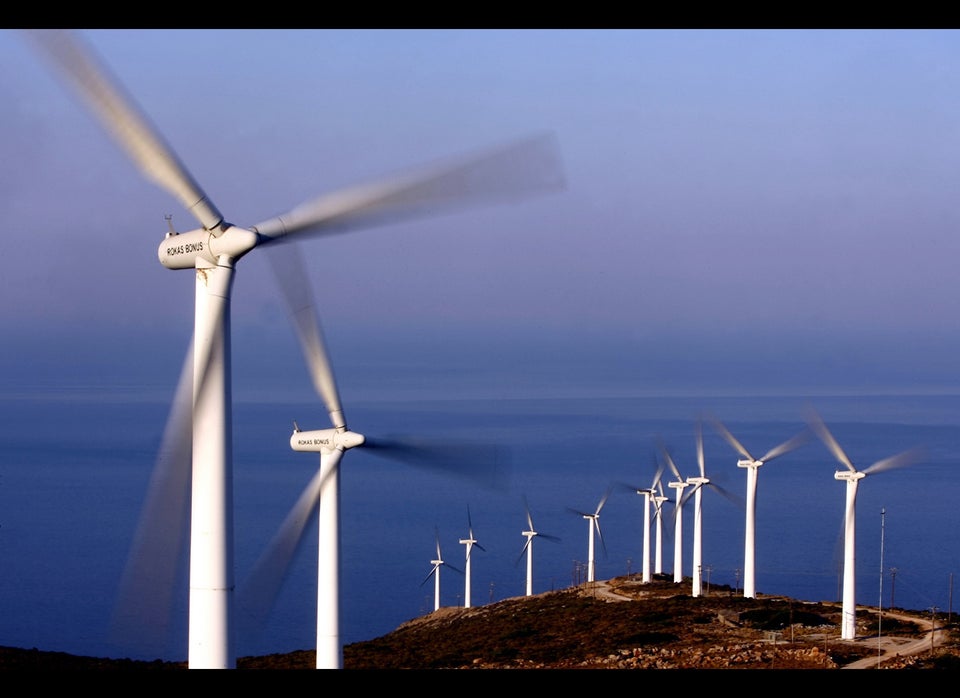BOSTON -- A vast expanse of ocean south of Martha's Vineyard and Nantucket could be leased for offshore wind energy by the end of 2013, according to a timeline laid out by federal officials Tuesday.
"We're going to shoot to have that lease sale in that fall time period," Maureen Bornholdt, renewable energy program manager for the U.S. Interior Department's Bureau of Ocean Energy Management, said during a public meeting in Boston.
The estimated time frame for leasing means that selected wind energy developers would have until about the end of 2018 to submit construction and operations plans and potentially an additional 20 years to produce wind energy from the leased areas, Bornholdt said. The leasing plan does not affect Cape Wind, the proposed Nantucket Sound wind farm, which has already been awarded a lease by the federal government.
For Massachusetts, which under Gov. Deval Patrick set an aggressive goal of having 2,000 megawatts of wind energy -- most coming from offshore -- by 2020, the timing of the leasing process is a potential, if necessary, setback.
"It's hard to speculate whether this will impact our goals," Massachusetts Executive Office of Energy and Environmental Affairs spokeswoman Krista Selmi said after Tuesday's meeting.
Although Patrick has pushed for speed in leasing areas off the state's coast for wind energy, at other times he has called for a delay to ensure that all interested parties have the opportunity to comment on the process, Selmi said.
Tuesday's meeting was the first of four scheduled to answer questions and take comments on an environmental assessment of survey activities in the proposed leasing area, which covers nearly 743,000 acres, or 877 square nautical miles. Other meetings are scheduled for today on Martha's Vineyard and Thursday on Nantucket.
The area could produce 4 gigawatts of wind energy, which is enough to power 1.7 million homes in the state, Bill White, assistant secretary of federal affairs at the state's energy and environmental agency, said at the start of Tuesday's meeting.
The environmental assessment found no significant effects from potential site assessment activities, which could include increased vessel activity and constructing meteorological towers to collect weather data, said Brian Kevor, environmental protection specialist with the Bureau of Ocean Energy Management.
"We think it's an area that's eliminated a lot of the conflicts," Kevor said.
The danger of ship strikes or acoustics on North Atlantic right whales and other marine mammals would be small and could be mitigated by monitoring and other standard operating procedures, Kevor said.
Similarly, effects on commercial fishing during the site assessment phase of the leasing process would be minimal, he said.
Based on comments about the proposed site assessment work, federal officials will decide whether to issue a finding of "no significant impact," revise the environmental assessment or determine that a more detailed environmental impact statement is required, Kevor said.
Deciding on an auction format for leasing and going out for a final lease sale could take some time, Bornholdt said, adding that the process is further complicated by a high level of interest in areas off Massachusetts.
Already 10 wind energy developers have expressed interest in the area and a half-dozen leases may be awarded, she said.
Once leases are awarded, developers would be required to file environmental impact statements for specific projects, Bornholdt said.
Only three of the two dozen people in attendance at Tuesday's meeting had questions or comments in favor of offshore wind energy.
"This is an energy that's local, it's pollution-free, it's safe, and it's reliable," said Environment Massachusetts Research & Policy Center energy associate Danielle Falzon.
Ken Pruitt, managing director of the Environmental League of Massachusetts, argued that concerns over the potential visual effects of offshore wind turbines should be weighed against visual impacts from mountaintop removal to extract coal or the devastation that occurred during Hurricane Sandy, which many environmentalists say was a result of climate change.
The entire area under consideration should be available to offshore wind energy, Pruitt said after the meeting, adding that it should be reduced in size only for a very good reason. ___
(c)2012 the Cape Cod Times (Hyannis, Mass.)
Visit the Cape Cod Times (Hyannis, Mass.) at www.capecodonline.com
Distributed by MCT Information Services
